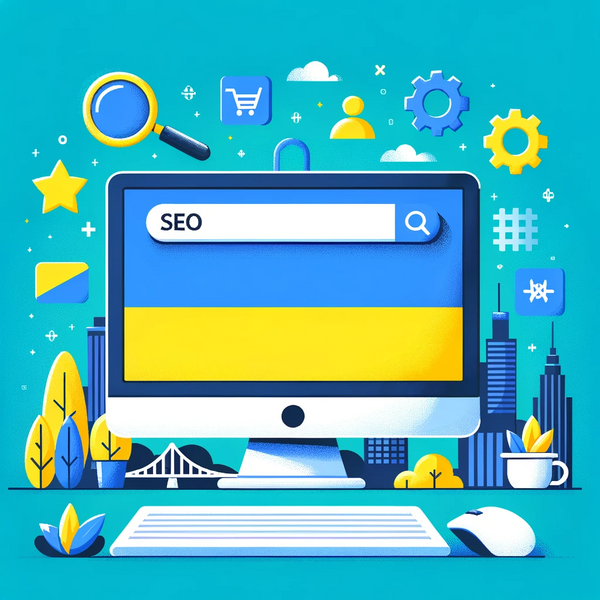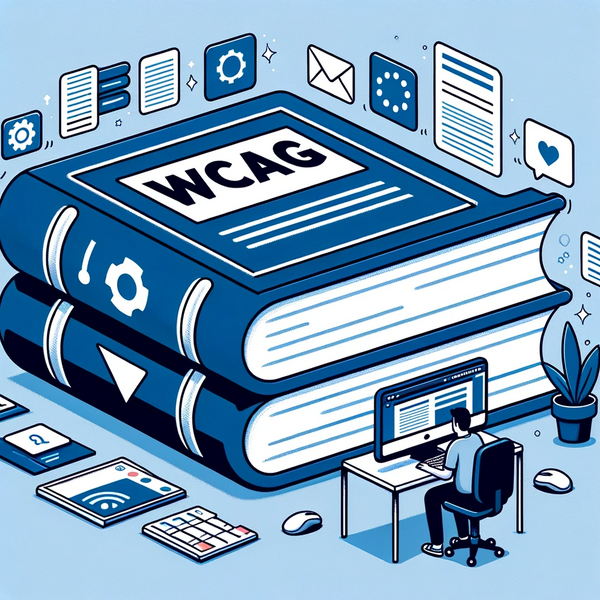Myths and reality about web accessibility


Institute of Innovative Governance
08.11.2023
Within the expansive digital realm, misunderstandings surrounding web accessibility frequently emerge. Despite the internet fundamentally transforming our lifestyle, professional interactions, and communication methods, numerous myths persist, veiling the essence of what it means to have an internet that is truly inclusive for all. Is web accessibility just a niche issue that affects only a small part of the population? Or is it a fundamental principle that shapes a more inclusive and equitable digital future for all? By exploring this question, we aim to separate fact from fiction, dispel myths and highlight the real state of affairs in the field of web accessibility.
Let's bust some common myths and shed some light on the realities of web accessibility.
Myth 1: Accessibility only benefits people with disabilities
Reality: While accessibility primarily focuses on inclusivity for people with disabilities, it benefits all users by increasing usability, improving user experience, and increasing overall satisfaction.
For example, take the elderly, whose technological interactions may be hindered by age-related changes in vision, hearing and motor skills. Web accessibility ensures that they can also navigate the digital world with ease and confidence. Similarly, a person with a temporary injury, such as a broken arm, may also have difficulty with certain interfaces - accessible design tools in such scenarios.
Additionally, in situations where users are accessing content in less than ideal conditions - for example, when they are viewing a website on a mobile device in bright sunlight or in a noisy environment - accessible features such as high contrast modes and text transcription can be invaluable.
But the benefits are not just situational. Universal website design often results in cleaner code, which can lead to faster loading times and better search engine optimisation (SEO). What's more, companies that prioritise accessibility often see higher user engagement, reduced bounce rates, and increased brand loyalty. Ultimately, when users feel valued and understood, they are more likely to return and support the platform.
In essence, while the primary purpose of web accessibility is to promote inclusivity for people with disabilities, its benefits radiate outwards, enriching the digital experience for everyone and contributing to a more inclusive, efficient and user-centric web ecosystem.
Myth 2: Accessibility is expensive and time-consuming
Reality: The initial investment in accessibility can be outweighed by the long-term benefits, including reaching a wider audience, improving SEO, and avoiding legal complications. Inclusive design from the start can minimise costs.
When you look deeper into the economics of web accessibility, the adage "It's better to prevent than to cure" rings particularly true. While an initial commitment to accessibility may seem like a daunting investment for many organisations, the long-term dividends are multifaceted and often outweigh the initial cost.
Firstly, consider the potential expansion of the audience. Approximately 15% of the world's population has some form of disability. By ensuring that digital platforms are accessible, companies can gain access to this huge and often overlooked market segment, leading to increased traffic, conversions, and revenue streams.
The next issue is search engine optimisation (SEO). Accessible websites, by their very nature, often have well-structured, semantic markup, clear navigation, and meaningful alt text for images - all of which are SEO gold. Search engines favour sites that offer a better user experience, which leads to higher rankings, more visibility and, as a result, more organic traffic.
The legal environment further emphasises the importance of web accessibility. In many jurisdictions, there is a growing focus on digital inclusion, with legislation requiring that digital spaces be accessible to all. Failure to comply with these requirements can lead to lawsuits, heavy fines and reputational damage. By proactively supporting accessibility, organisations can avoid these legal pitfalls and the associated financial and reputational risks.
Myth 3: Accessible websites are dull and unattractive
Reality: The long-held misconception that accessibility comes at the expense of aesthetics is a myth that needs to be busted. In web design, beauty and functionality can and should coexist in harmony. Contrary to the perception that accessible websites are simple or basic, the truth is that accessibility and aesthetics are not mutually exclusive. In fact, they often complement and reinforce each other.
When designers and developers prioritise accessibility from the outset, they are forced to think more deeply about the user experience, which leads to more thoughtful and innovative design solutions. This approach allows you to create websites that are not only user-friendly, but also captivate with their design. By focusing on clarity, simplicity, and user-centricity, designers can create interfaces that are both visually stunning and intuitive to navigate.
Consider, for example, the use of colour contrast. While it is essential for making text readable for visually impaired users, it also plays a key role in directing the attention of all users, creating emphasis, and establishing visual hierarchy. Similarly, the use of spacious layouts, clear typography, and meaningful animation can benefit all users by reducing cognitive load, improving readability, and adding a layer of superior interactivity.
Modern web technologies and design methodologies have evolved to the point where they allow designers to push the boundaries of creativity while remaining firmly rooted in accessibility principles. There are now tools and frameworks that allow dynamic, interactive elements such as sliders, animations, and multimedia content to be both engaging and accessible.
In addition, the collaboration of designers, developers, and accessibility experts often results in a richer and more engaging web experience. By combining the best of both worlds - stunning visual design with rigorous accessibility standards - websites can become digital masterpieces that resonate with a diverse audience.
Myth 4: Small businesses don't need to worry about accessibility
Reality: Every organisation, regardless of size, should prioritise accessibility to ensure inclusivity, reach a wider audience, and comply with legal regulations.
In today's digital landscape, accessibility is a fundamental necessity for every organisation, regardless of size. A focus on accessibility underscores an organisation's commitment to valuing all users, building trust and enhancing its brand reputation. By ensuring that digital platforms are accessible to everyone, including people with disabilities, companies can connect with a wider audience, which can increase engagement and potential revenue. Furthermore, as global laws emphasise digital accessibility, compliance is not only optional, it is essential to avoid significant financial and reputational consequences. Furthermore, accessible platforms are built with the flexibility to adapt to the ever-changing digital world, ensuring a long-lasting and optimised experience for all users. As such, accessibility is both a moral and strategic imperative that offers tangible and far-reaching benefits.
Myth 5: Once accessible, always accessible
Reality: In today's digital landscape, accessibility is not just a one-off initiative, it is an ongoing commitment. Web accessibility requires ongoing efforts, especially as the digital sphere is in a state of constant evolution. Regular updates are essential to ensure that platforms are compliant with the latest standards and best practices. Ongoing monitoring is equally important, as even minor changes can inadvertently create barriers to accessibility. Gathering user feedback is another important component that provides invaluable insight into the actual use of the platform and potential opportunities for improvement. As technology evolves and user needs change, organisations must remain proactive, adapting and improving their digital assets to ensure an inclusive and accessible experience for all. This dynamic approach not only ensures compliance, but also ensures that digital platforms remain user-centric, meeting the diverse needs of the global online community.
Myth 6: Accessibility is only about web design
Reality: Web accessibility is a complex endeavour that requires the collective expertise and collaboration of various digital stakeholders. Designers play a key role in creating intuitive and inclusive interfaces, ensuring that visual elements are appealing and understandable to all users. Developers, on the other hand, delve into the technical details, ensuring that the underlying code supports and promotes accessibility across devices and browsers. Content creators do their part by ensuring that the information presented is clear, concise, and equipped with necessary accommodations, such as alternative text for images or transcriptions for audio content.
But beyond these key players, the role of users is indispensable. Their feedback and experiences offer a real-world perspective, shedding light on areas that might otherwise be overlooked. It is thanks to their interaction and insights that digital platforms can be perfected.
Thus, accessibility is not limited to one element; it permeates all aspects of a digital platform. From design aesthetics and content clarity to site functionality and overall user experience, each component must be approached with inclusivity in mind. When these elements come together in harmony, the result is a digital space that truly welcomes everyone, reflecting the diversity of the global online community.
Debunking these myths about web accessibility is a crucial step towards strengthening understanding and advocating for a universal, inclusive Internet. Accessibility is not a feature that is nice to have; it is a fundamental right and an integral aspect of creating a diverse and equitable online world.



